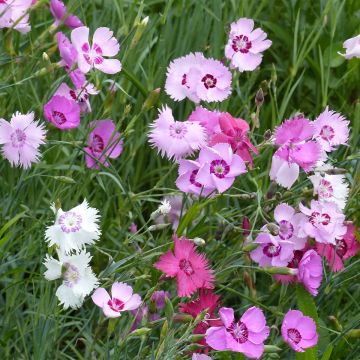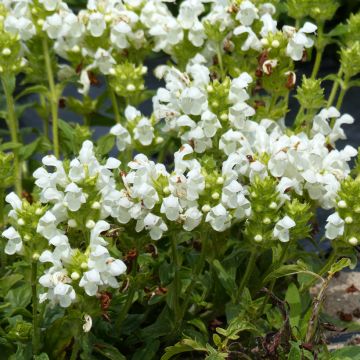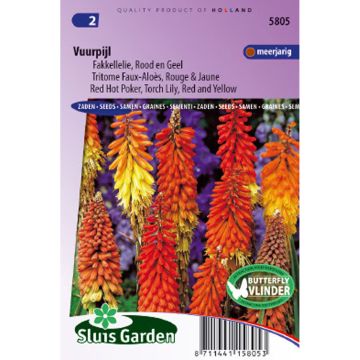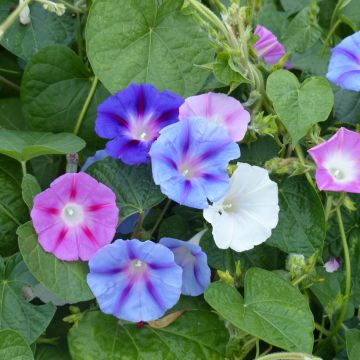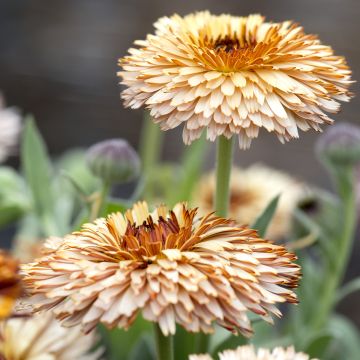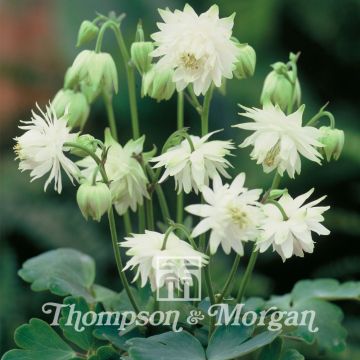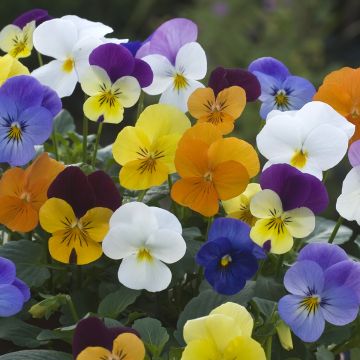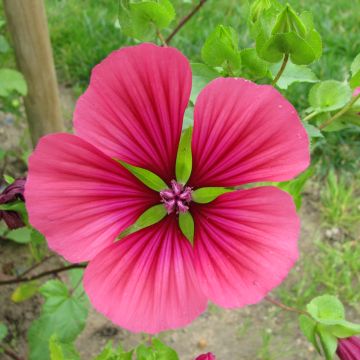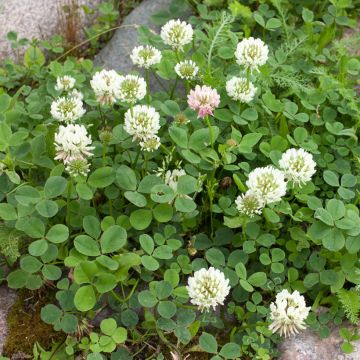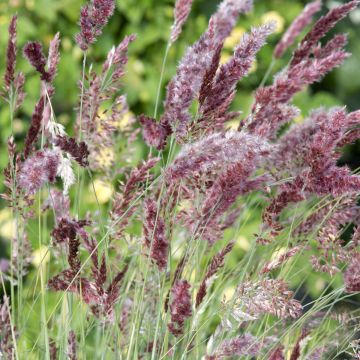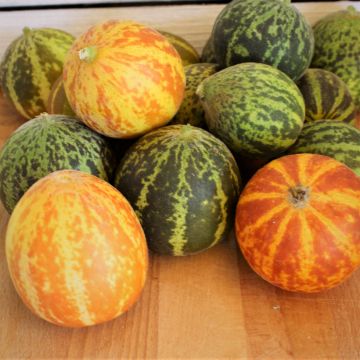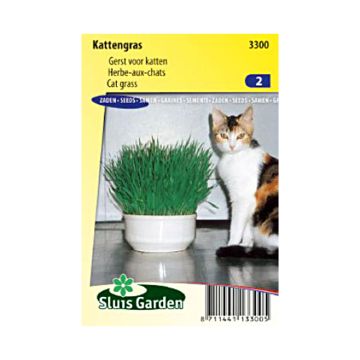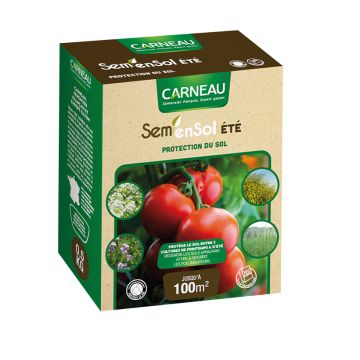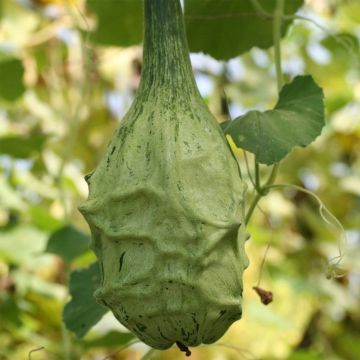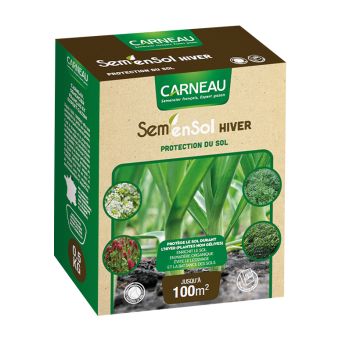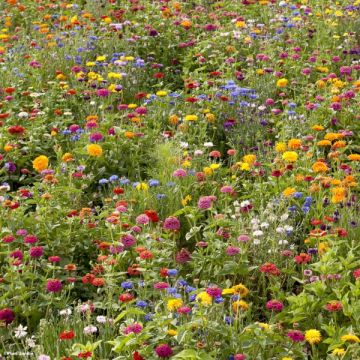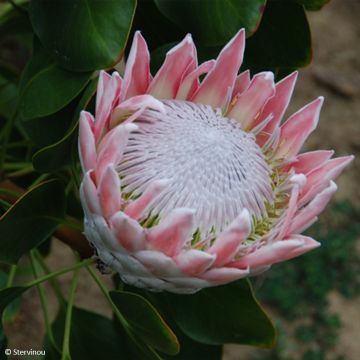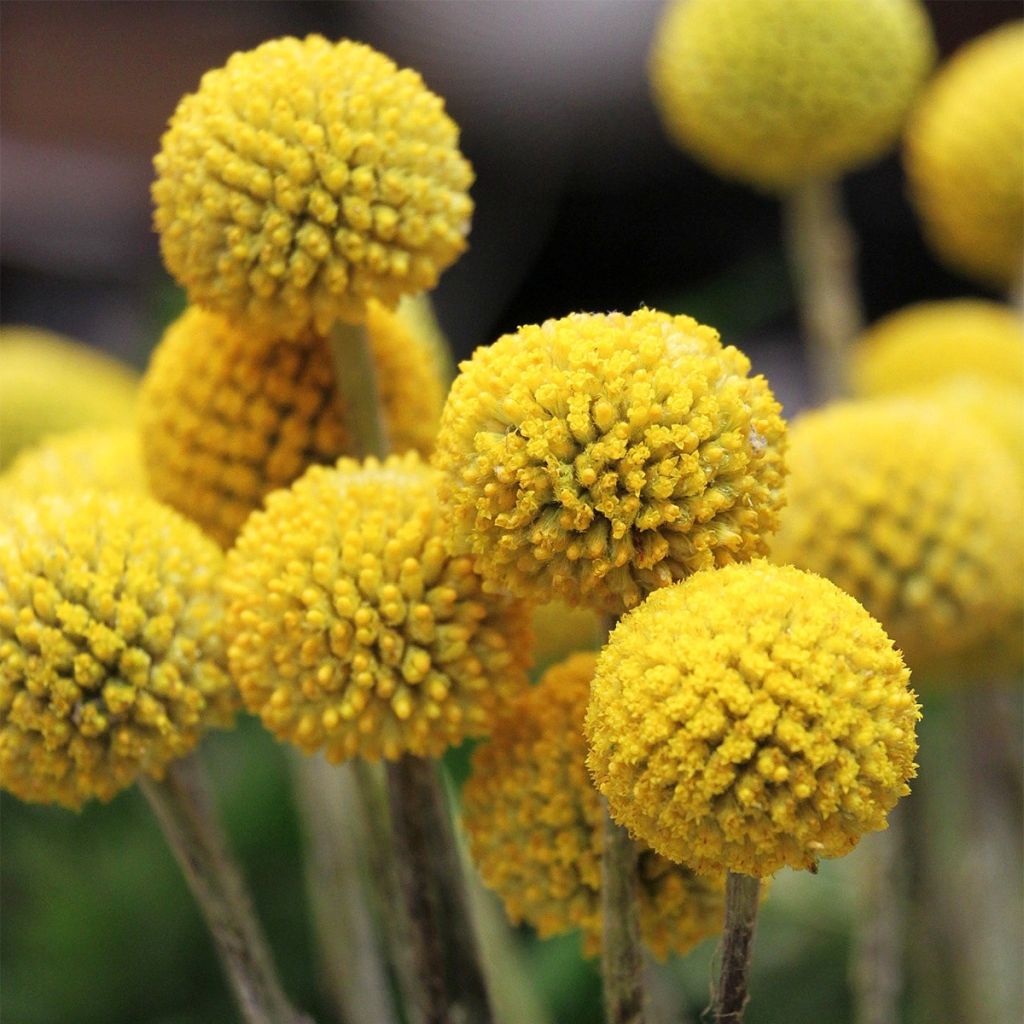

Craspedia Baguette de tambour NT - Ferme de Sainte Marthe
Craspedia globosa
Craspedia globosa
Drumsticks
Survivor of the package, fortunately the seeds are less fragile than live plants, we'll see after the sowing period.
Albano , 28/02/2024
This item cannot be shipped to the selected country
Dispatch by letter from €3.90
Delivery to Corse prohibited
More information
Schedule delivery date,
and select date in basket
This plant carries a 6 months recovery warranty
More information
We guarantee the quality of our plants for a full growing cycle, and will replace at our expense any plant that fails to recover under normal climatic and planting conditions.
Seed-only orders are dispatched by sealed envelope. The delivery charge for seed-only orders is €3.90.
Delivery to Corse prohibited: UE law prohibits the import of this plant from mainland France to Corse as part of the fight against Xylella fastidiosa. Please accept our sincere apologies.
More information
Does this plant fit my garden?
Set up your Plantfit profile →
Description
Craspedia globosa bears a sculptural flower, popular with florists who use its floral stems to bring light and structure to country-style bouquets. In the garden, it charms with its silver-green foliage and its endless summer flowering. It pairs perfectly with chamomile flowers, white asters, blue thistles, and agapanthus. It is perennial, but is not very hardy. It is grown as an annual outside of mild regions. Sow the seeds in spring in containers, rockeries, and flower beds, in moderately dry soil. It is not uncommon for it to self-sow in the garden.
Craspedia globosa belongs to the Asteraceae family and is a relative of daisies, dandelions, and asters. Its flowers are organised in globular heads. It is a rhizomatous perennial plant native to Australia and New Zealand, adapted to mild winters, with hardiness not exceeding -7°C (19.4°F) for a well-established specimen planted in well-drained soil. The foliage is evergreen in mild climates. It forms a dense rosette composed of elongated oval and spatulate leaves covered in hairs that give them a beautiful silver-green appearance. Flowering begins in June-July, depending on the sowing date, and continues until September. Thin, upright floral stems emerge from the foliage, rising 50 to 60cm (20 to 24in) from the ground. At the end of each stem, a head in the shape of a 2 to 3cm (1in) diameter ball appears, with 8 to 10 nectar-rich florets. They are extremely popular with butterflies and bees. The tubular florets are surrounded by decorative golden yellow bracts, which dry while retaining their beautiful colour. After pollination, feathery fruits called achenes form and are dispersed by the wind.
Craspedia globosa is an easy-to-grow plant that can be sown in the garden or in pots. In mild climates, it becomes perennial. It can be paired with wildflowers (cornflower, chamomile, cosmos, delphinium, centaurea), in the ground as well as in bouquets. This elegant plant suits more sophisticated compositions, alongside agapanthus, dahlias, and roses, punctuating them with round and luminous touches. Placed in a glass bottle or a bud vase, these "drumsticks" become a beautiful decorative object that can be kept for a long time by letting them dry without water, adding a charming touch to any interior.
Report an error about the product description
Craspedia globosa in pictures
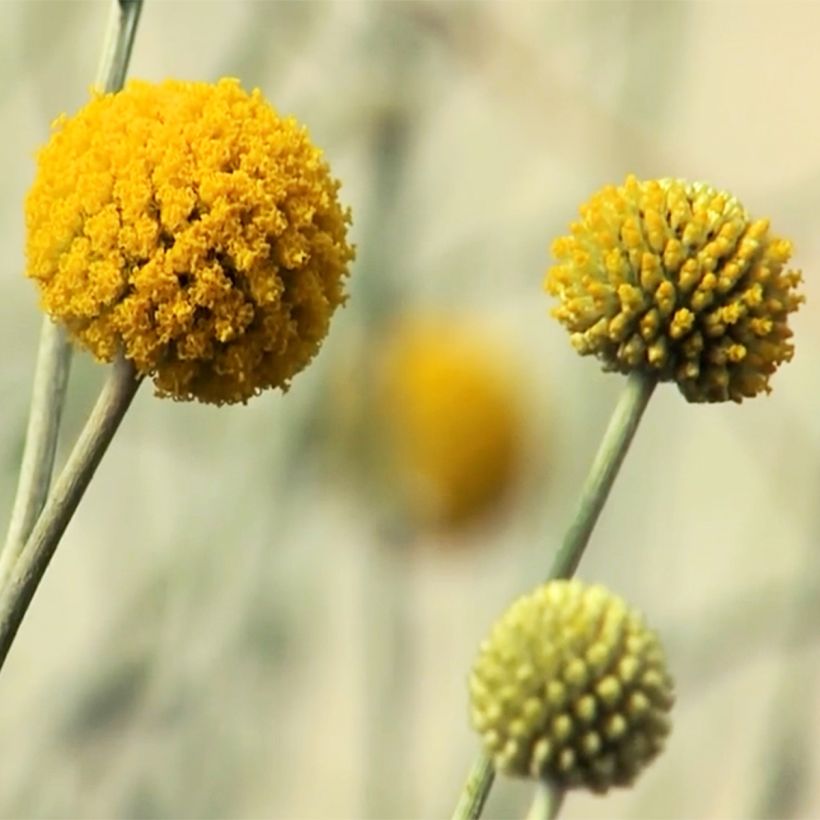

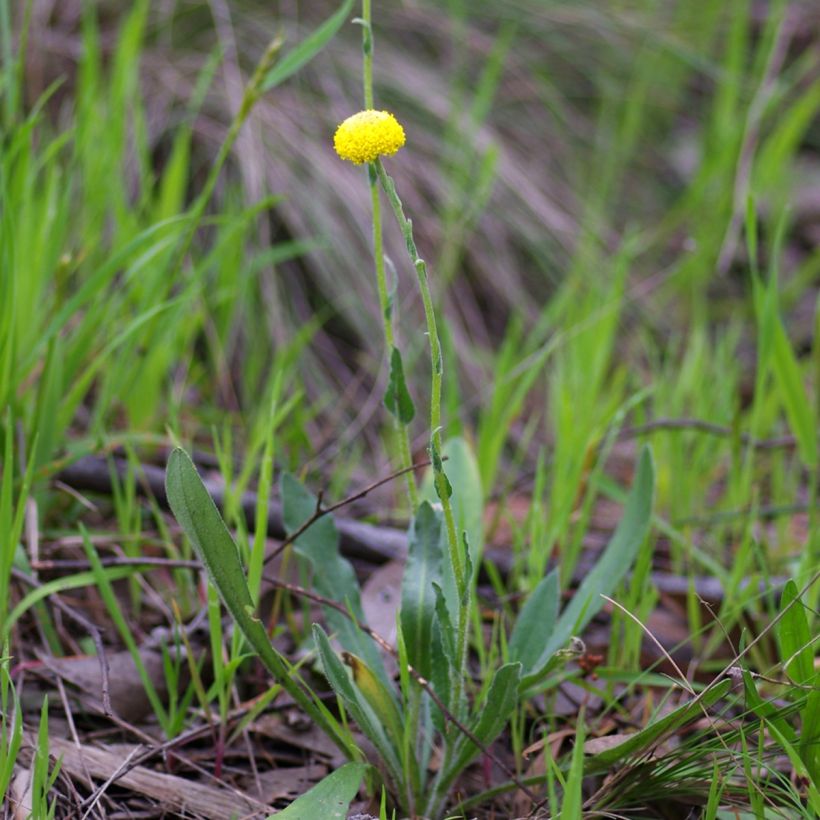

Flowering
Foliage
Plant habit
Botanical data
Craspedia
globosa
Asteraceae
Drumsticks
Oceania
Other Flower seeds A to Z
Planting and care
Sowing
From March to April, sow the seeds in a warm place, in a seed tray or in a pot. They can be sown directly in open ground after the last frosts. The seeds germinate between 13 and 18°C (54.5 to 64.4°F). Do not bury them too deeply. Simply sprinkle with special seed compost and keep the substrate slightly moist through spraying, for example.
Transplant the young plants into open ground as soon as they have a few leaves, once the risk of frost has passed. Respect a spacing of 30 to 40cm (12 to 16in) between plants.
Cultivation
It likes warm, sunny or semi-shady exposures (semi-shade in dry and hot regions). It grows well in rather rich, well-draining soil, although it can tolerate heavier soils in regions where winter is mild. It tolerates drought, but grows and flowers longer in moist soil, or if regular watering is provided. If desired, you can provide a flower fertiliser once or twice during flowering. It has a rapid growth rate and blooms from summer until October. It can withstand frost down to -7°C (19.4°F) when established in well-drained soil.
Clumps can be divided in September or October.
Water at the base, avoiding wetting the foliage.
At the end of flowering, cut the clump down to ground level and place a thick mulch to protect it from cold and excessive humidity.
Sowing period
Intended location
-
, onOrder confirmed
Reply from on Promesse de fleurs
Flower seeds
Haven't found what you were looking for?
Hardiness is the lowest winter temperature a plant can endure without suffering serious damage or even dying. However, hardiness is affected by location (a sheltered area, such as a patio), protection (winter cover) and soil type (hardiness is improved by well-drained soil).

Photo Sharing Terms & Conditions
In order to encourage gardeners to interact and share their experiences, Promesse de fleurs offers various media enabling content to be uploaded onto its Site - in particular via the ‘Photo sharing’ module.
The User agrees to refrain from:
- Posting any content that is illegal, prejudicial, insulting, racist, inciteful to hatred, revisionist, contrary to public decency, that infringes on privacy or on the privacy rights of third parties, in particular the publicity rights of persons and goods, intellectual property rights, or the right to privacy.
- Submitting content on behalf of a third party;
- Impersonate the identity of a third party and/or publish any personal information about a third party;
In general, the User undertakes to refrain from any unethical behaviour.
All Content (in particular text, comments, files, images, photos, videos, creative works, etc.), which may be subject to property or intellectual property rights, image or other private rights, shall remain the property of the User, subject to the limited rights granted by the terms of the licence granted by Promesse de fleurs as stated below. Users are at liberty to publish or not to publish such Content on the Site, notably via the ‘Photo Sharing’ facility, and accept that this Content shall be made public and freely accessible, notably on the Internet.
Users further acknowledge, undertake to have ,and guarantee that they hold all necessary rights and permissions to publish such material on the Site, in particular with regard to the legislation in force pertaining to any privacy, property, intellectual property, image, or contractual rights, or rights of any other nature. By publishing such Content on the Site, Users acknowledge accepting full liability as publishers of the Content within the meaning of the law, and grant Promesse de fleurs, free of charge, an inclusive, worldwide licence for the said Content for the entire duration of its publication, including all reproduction, representation, up/downloading, displaying, performing, transmission, and storage rights.
Users also grant permission for their name to be linked to the Content and accept that this link may not always be made available.
By engaging in posting material, Users consent to their Content becoming automatically accessible on the Internet, in particular on other sites and/or blogs and/or web pages of the Promesse de fleurs site, including in particular social pages and the Promesse de fleurs catalogue.
Users may secure the removal of entrusted content free of charge by issuing a simple request via our contact form.
The flowering period indicated on our website applies to countries and regions located in USDA zone 8 (France, the United Kingdom, Ireland, the Netherlands, etc.)
It will vary according to where you live:
- In zones 9 to 10 (Italy, Spain, Greece, etc.), flowering will occur about 2 to 4 weeks earlier.
- In zones 6 to 7 (Germany, Poland, Slovenia, and lower mountainous regions), flowering will be delayed by 2 to 3 weeks.
- In zone 5 (Central Europe, Scandinavia), blooming will be delayed by 3 to 5 weeks.
In temperate climates, pruning of spring-flowering shrubs (forsythia, spireas, etc.) should be done just after flowering.
Pruning of summer-flowering shrubs (Indian Lilac, Perovskia, etc.) can be done in winter or spring.
In cold regions as well as with frost-sensitive plants, avoid pruning too early when severe frosts may still occur.
The planting period indicated on our website applies to countries and regions located in USDA zone 8 (France, United Kingdom, Ireland, Netherlands).
It will vary according to where you live:
- In Mediterranean zones (Marseille, Madrid, Milan, etc.), autumn and winter are the best planting periods.
- In continental zones (Strasbourg, Munich, Vienna, etc.), delay planting by 2 to 3 weeks in spring and bring it forward by 2 to 4 weeks in autumn.
- In mountainous regions (the Alps, Pyrenees, Carpathians, etc.), it is best to plant in late spring (May-June) or late summer (August-September).
The harvesting period indicated on our website applies to countries and regions in USDA zone 8 (France, England, Ireland, the Netherlands).
In colder areas (Scandinavia, Poland, Austria...) fruit and vegetable harvests are likely to be delayed by 3-4 weeks.
In warmer areas (Italy, Spain, Greece, etc.), harvesting will probably take place earlier, depending on weather conditions.
The sowing periods indicated on our website apply to countries and regions within USDA Zone 8 (France, UK, Ireland, Netherlands).
In colder areas (Scandinavia, Poland, Austria...), delay any outdoor sowing by 3-4 weeks, or sow under glass.
In warmer climes (Italy, Spain, Greece, etc.), bring outdoor sowing forward by a few weeks.

































